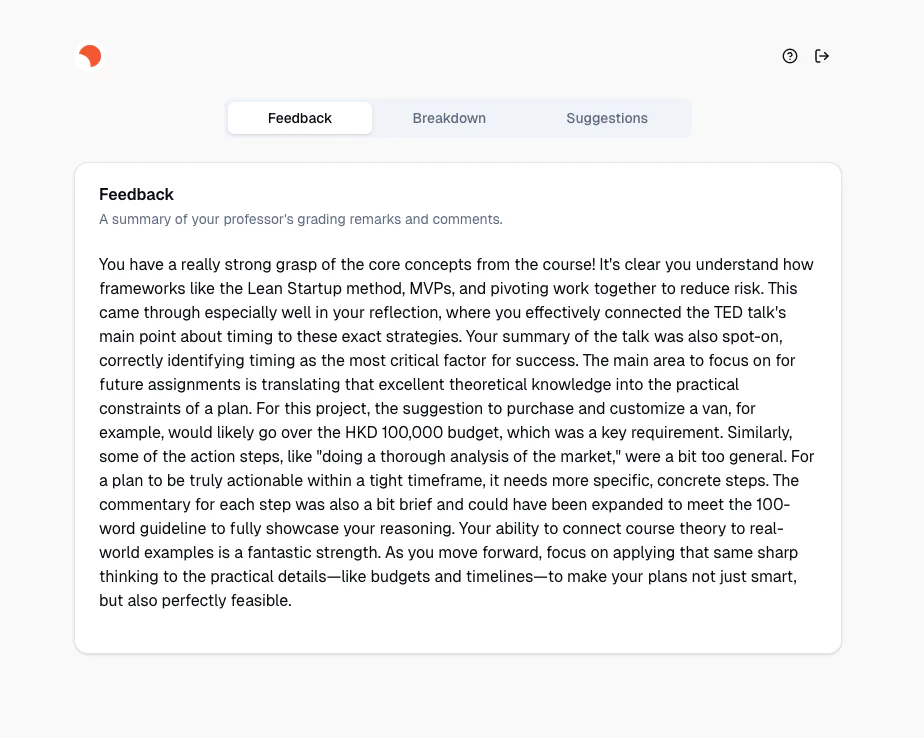Our grade and feedback reports are designed with two objectives:
a) to make it faster for your instructor to provide each of you with feedback and
b) to deliver insightful, easy-to-understand and personalized feedback to you.
Given the often large course sizes at universities, you can imagine that writing personalized feedback for all of you is an extremely tedious task for educators.
And that's where we come in.
We help educators to grade more consistently and provide you with better feedback by offering a suite of tools (including Artificial Intelligence) that make creating and sharing feedback more efficient.
About our reports
Our grading and feedback reports consist of four parts:
- Your final grade
- Written feedback
- Rubric breakdown
- Suggestions
Your final grade
Your final grade is determined by your instructor. We do not use AI to assign grades directly and only provide assistance by comparing your instructor's feedback with their grading rubric to help the instructor align your grade with their feedback.
Written feedback
The written feedback you receive is generated by AI. Here's how it works:
We use AI to summarize all the notes your instructor makes when reviewing your work. To make those notes easier to read and more valuable for you in terms of feedback quality, we use AI to translate them into the written feedback that you receive. This allows instructors to write down their thoughts without having to polish them, while ensuring that the feedback you get is valuable and helpful.
Important — we do not invent, assume, or infer any feedback that was not explicitly given or approved by your instructor.
It's important to emphasize that we do not invent, assume, or infer any feedback that was not explicitly given or approved by your instructor. This ensures the feedback you receive is authentic and accurately reflects your instructor's view on your work and academic performance.
Rubric breakdown
For each rubric criterion, we provide you with a quick overview of how you performed. This process is similar to how we create your written feedback. Each section acknowledges your strengths and discusses areas for improvement based exclusively on your instructor's notes.
Suggestions
We use AI to identify the core skills you should improve on and conduct a targeted "how-to" search to find practical resources that directly address the specific skill gap. We then evaluate the search results to ensure that we only suggest top-quality, accessible resources:
- 100% Free: No hidden costs or sign-ups
- Easy to Understand: Clear, concise content for you
- Highly Relevant: Precisely focused on the specific skill(s)
- Credible Sources: Prioritizing reputable platforms
Finally, we suggest the top 2-3 resources we think will help you improve your work in the future. This is an 'early beta' feature, and we hope it helps you make the most of your instructor's feedback.
For privacy questions or to exercise your rights, contact privacy@clairelabs.ai.



.svg)